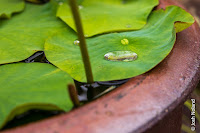

The anticipation the night before Española Island was high. Why, you ask? Well, Española has a good selection of the creatures on the must-see list which makes it one of the most highly rated islands.
During our nightly briefing Efrain went over the list of sights and sounds. It was epic! The usual crew of Sea Lions would be on a beach, countless types of birds with a possible Galapagos Hawk sighting, a couple types of marine iguanas including the Red Marine Iguana that looks like a rugged explosion of Christmas colors, the much anticipated Blue-footed Boobies that as of last week were in mating season, staggering cliff views overlooking a blow hole that fires as each wave hits the shore, plus the icing on the cake being one of the prime spots in the world to see the spectacular Waved Albatross.
The morning couldn't come soon enough, so here we go!
Hitting the beach we instantly found plenty to see including some sea lions sunning themselves next to a tree full of marine iguanas doing the same but tails only, hiding under a tree. Nearby were countless other Red Marine Iguanas warming on the rocks including this poor guy below missing some of his tail, ouch.

A trail through the rocks and brush lead us to the other side of the island where we stumbled on some masked boobies, more iguanas and a set of flirting blue footed boobies! Witness, the courting ritual. A whirling and whooshing mating call with wings flared out and up to the sky. Then head bobbing up and down the wobble while switching back and forth standing on each foot. If the lady likes him she'll dance back at him and mimic his call.
After watching this for a few minutes we headed on down the path where we found outstanding views including the blow hole and cliffs that were home to hundreds of Marine Iguanas warming themselves in the sun. They were everywhere and you could even find some big clusters where they were all sprawled out laying on top of one of another.
The views, lighting, colors, cliffs, clouds, creatures were out of this world! The sea breeze coupled with a slight sea spray just added to the sights! But we weren't done yet...




Looking for the Albatross' soon took over as our path headed back inland and we came upon their lush breeding grounds. Stopping on a high path with good views of the Albatross, we sat and tried to take it all in.
The Albatross is a funny looking bird - kind of like that big-boned and awkward friend you have. They seem too big to have any grace whatsoever. But then one of them waddles over to the high cliffs, pauses as if wondering is this is a good idea, but then takes a leap. You immediately shudder thinking he's about to plummet like a stone but then he spreads his 8-foot wing span and takes flight! They do fly and quite majestically, at that! Soaring over the cliffs they hardly even had to move their wings as they glide along.
As with many other Galapagos birds, they nest on the ground, so we were able to get quite close. While somewhat awkward looking, they have an almost porcelain-like appearance - soft white feathers that fade into a gray-brown. We could see quite a few nests grouped together in a certain area including seeing one frisky couple going at it - stop that - you have visitors!

As we headed back to the beach to be picked up at the end of the hike, Efrain said we needed to be on the lookout for the hard-to-find Galapagos Hawk. Sitting on the beach, we looked out towards the center of the island and there he was, perched in a bush in the distance scouting his next meal. Well it was our lucky day because he took off and flew right by us.
The sun was getting lower in the sky so it was our time to go but Espoñola provided some out-of-this-world sights and wildlife encounters which are hard to beat. Even the moon came out to say hello as we left the island. Enjoy the photos.
Up Next:
Floreana Island Flamingos


 Founded somewhere in the early 800s, this Buddhist Temple is very traditional with sacred spots and many memorial Buddha statues. Many of the ~8000 statues that are dedicated to lone lost souls who died without a family which just carries such a human story. It was a very peaceful place where you could feel the connection to nature and absorb the vast history it protects. As you wind through the temple you find a set of stairs flanked by the towering Bamboo grove to enjoy. A short climb to the top of the temple, leading to a clearing with another shrine. If you time it right, you may be the only ones around and can just stop and enjoy. No hustle and bustle.
Founded somewhere in the early 800s, this Buddhist Temple is very traditional with sacred spots and many memorial Buddha statues. Many of the ~8000 statues that are dedicated to lone lost souls who died without a family which just carries such a human story. It was a very peaceful place where you could feel the connection to nature and absorb the vast history it protects. As you wind through the temple you find a set of stairs flanked by the towering Bamboo grove to enjoy. A short climb to the top of the temple, leading to a clearing with another shrine. If you time it right, you may be the only ones around and can just stop and enjoy. No hustle and bustle.
















































